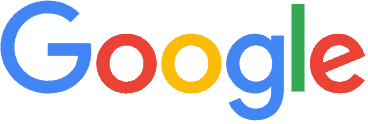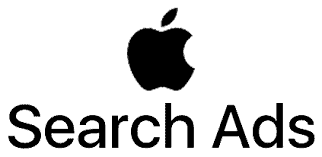
Currently, a handful of giant publishers account for 81% of all U.S. digital ad revenue. These publishers operate within what are usually referred to as “walled garden ecosystems.” But what are walled gardens? And what does it take to get walled garden advertising right?
Read on for an in-depth look at walled gardens, along with the advantages and disadvantages they offer advertisers.
What is walled garden media?
In digital advertising, a walled garden refers to any giant publisher operating within a closed ecosystem in which the publisher controls all activity and processes. A few examples of walled gardens include Alphabet (the parent company of Google), Amazon, and Meta, which encompasses both Facebook and Instagram. In a walled garden, the publisher controls access to customer data, along with the ad types available to advertisers. Most rely on a self-service modelthrough which advertisers manage bids, create ads, and access campaign insights provided by publishers.
The average consumer spends a huge chunk of their screen time in various walled gardens. Shopping on Amazon, scrolling Instagram, or even downloading a new app from the App Store are all examples of visiting walled gardens. Within those gardens, users are delivered ad content relevant to previous behaviors, such as videos related to search history, content they’ve recently consumed, or product suggestions based on past purchases. For example, if a user follows several food magazines and cookware brands on Instagram, they’re likely targeted with ads for pots and pans.
History of walled gardens
The term “walled garden” doesn’t just apply to media. Its use is usually credited to John Malone, founder of a company called Tele-Communications Inc., which AT&T later acquired. Initially, it referred to the ways U.S. telecommunication companies strived to own their customers’ use of products and services. One of the most famous examples of the walled garden model comes from Bell Systems. The company once attempted to make its hardware exclusive to the brand so that customers leased their phones from the company.
Similarly, walled garden publishers in the digital media landscape make their content and ad types exclusive to the brand. An Instagram post looks very different from a Pinterest post, even if the same user uploads the same image to both sites. Walled gardens are about creating a unique, rich experience to keep users engaged within the platform.
Understanding the walled garden ecosystem
A walled garden ecosystem offers users an all-in-one experience in which they can consume content, shop, and communicate with other users. In many social media apps, for instance, users can post their own content, direct message friends and businesses, and shop sponsored content without ever leaving the app.
For advertisers, walled garden ecosystems offer the advantage of targeting users based on their behaviors within the platform. However, one common concern among advertisers about walled garden publishers is the fact that all or most user data is owned by the platform, giving publishers total control over what insights they share with advertisers.
And no two walled gardens are exactly alike in the types of ad products or insights they offer advertisers. Here are some of the most common walled garden ecosystems, along with their distinct characteristics:

Alphabet: Alphabet is the name of Google’s holding company, responsible for its ad products. Google’s self-service ad products are typically sold on a CPC basis. Sponsored Search results, which appear at the top of Google searches alongside organic results, are marked by a small tag that reads “Ad”. Google Ads can be targeted based on location, device type, and search target. According to Skai’s Walled Garden survey, 71% of advertisers who reported high success rates for their walled garden media strategies made Google advertising a top priority.
Meta: The parent company of Facebook and Instagram, Meta, controlled 22% of U.S. digital media ad revenue spent in 2022, according to eMarketer. That dominance in the digital advertising world likely stems from the fact that Meta reportedly has around 3.74 billion global users each month. Along with those users, Meta also has a wealth of first-party data on demographics and location, but also critical details about its users’ interests, likes, and online behaviors. This data provides some of the most targeted advertising available, while Meta’s AI-powered tools also help advertisers automatically streamline and optimize ads with advanced text variation testing and background generation tools.

Amazon: Amazon has seen a rapid rise in ad revenue in a relatively short amount of time. The online retail behemoth now controls 12.6% of the online ad market, making the brand third in importance to Google and Meta. Amazon has expanded its ad offerings in recent years, introducing products like video ads and partnerships across its vast array of owned media properties. But, by far, the most popular tool for Amazon is its self-serve advertising platform for targeting ads at every stage of the buyer journey on Amazon’s website. Using Amazon’s first-party data, which includes purchase and search history, advertisers can bid on sponsored products, brands, and display ads that appear alongside search results, in banners, at checkout, or in product suggestion boxes to reach over a billion customers each month.

Apple: Apple Search Ads are incredibly important for advertisers who wish to stand out in Apple’s App Store. In 2020, mobile app usage grew a staggering 40% year-over-year and has continued to flourish, making app marketing an increasingly important focus for brands looking to stand out in a crowded marketplace.
Apple Search Ads are sold on a CPI (cost-per-install) basis. They appear at the top of the search results page and look like regular search results, save for their light blue background, and allow advertisers to target keywords, audiences, and regions.
Walled Gardens are a boon for content creation at a cost
Walled garden media ecosystems tightly control access to content and services, and creators must design content specifically for the parameters of the garden. Because content is so highly prioritized, one major benefit of walled gardens is the fact that users have chosen to visit specifically to interact with carefully curated content, which means they are highly engaged.
Take TikTok, for example. Users often visit the social media platform to watch a single video. However, because algorithms continuously suggest similar videos based on their unique interests, users frequently find themselves engaging with content they would not have sought out on their own. In fact, studies show that TikTok has an engagement rate of 4.25% from audiences who use the platform for an average of about 95 minutes a day. While there are definitely some drawbacks to walled gardens, for content creators like journalists, bloggers, and independent artists, they provide great opportunities to more easily find new audiences.
However, many content creators face the same challenges with walled garden media as advertisers. For starters, each garden requires its own unique form of content curation and platform management. Additionally, walled gardens almost always use algorithms to suggest content, which can result in some content creators being favored while others struggle to get noticed. These limitations can lead to a lack of diversity in the content ecosystem. And even when content creators connect with audiences, media content monetization can still be difficult. Winning a lot of followers does not necessarily mean that influencers or brands are seeing monetary returns on the time they have invested.
Advertising and monetization in walled garden ecosystems require a unified strategy
Many brands struggle to fully integrate their paid campaigns into their overall brand presence. It can be challenging to decide which products to promote in order to both boost sales and brand awareness. Like all marketing and advertising in the digital media landscape, making the most of walled garden advertising requires businesses and content creators alike to take a holistic approach to paid and organic reach.
Behind the scenes, walled garden publisher ad systems are working on behalf of each of their advertisers to improve ad matching. Consider that every time an ad gets served, it could potentially be chosen from a bank of millions of ads—and properly matching advertisers to ad inventory is a critical contributing factor to campaign success. However, a balanced approach to walled garden advertising requires the right mix of paid advertising, consistent brand voice across owned media properties, and careful planning.

For example, brands advertising with Amazon should think carefully about an ad’s utility before making a keyword bid. Is it a product that’s in high demand but does not have a lot of competition within the Amazon marketplace? Then that’s probably a great candidate. Another good approach to Amazon’s advertising strategy is considering products customers might search for using highly specific phrases. A specialty baking supply retailer who buys an ad for “Authentic Louisiana Mardi Gras King Cake Mix” is probably going to win a lot more attention from Amazon shoppers with specific intention to buy in February than someone who simply bid on terms like “Cake Mix.”
But the second part of winning within walled garden ecosystems comes from carefully curating and maintaining your own website, reviews, and properties across other platforms, as well as keeping your brand voice consistent in other paid advertising. Customers want personalized advertising from trustworthy brands. Building that trust across platforms and owned media spaces is part of a holistic strategy to bolster brand awareness in the long run rather than temporarily boost sales of a featured product.
Walled garden ecosystems are increasingly important in a cookieless world
The digital advertising world has changed over the last few years, as concerns about privacy have made it nearly impossible to rely on third-party data for advertising and retargeting. Consumer data privacy regulations limit marketers’ ability to run advanced tactics on the open web and impact many useful advertising tools, including ad targeting, personalization, retargeting, measurement, optimization, etc. This new focus on privacy means the walls of walled gardens have never been more advantageous to marketers.

One of the most important conversations in advertising over the past few years has been about global changes to consumer data tracking regulation and a greater trend toward data privacy in media overall. Marketers have been dealing with curveballs such as Apple’s ATT privacy policy, which prompts users to opt-in to data collection rather than giving the option to opt-out in their device’s settings as was previously the policy. Furthermore, the General Data Protection Regulation (GDPR) and changes to media regulation in California mean that websites must ask for permission to use cookies. As the data that used to be so widely available to marketers becomes increasingly hard to come by, personalization and targeting likewise become increasingly difficult.
In the past, advertisers’ main argument in favor of open web advertising is the fact that the walls of walled gardens create media monopolies that shut marketers out of the data collection process. Giant publishers, they argued, are more than willing to accept all the data marketers can provide but rarely send back even a fraction of their data to marketers. Those high walls that they can’t see over have prompted marketers to worry about issues such as targeting transparency (who is really being targeted?), ad serving verification (how many impressions are really shown?), and biased measurement (how effective is my investment?).
But now, with their high walls protecting logged-in users, it’s possible that soon, these “enclosed ecosystems” will be the last haven for advertisers to continue running their advanced tactics. Studies show that users want personalized advertising and don’t mind sharing data to get it. Since they have likely accepted the fact that they exchange data in order to visit walled garden platforms, users are more receptive to targeted messaging within those walls.
For marketers, walled garden advertising offers solutions for providing privacy-focused yet personalized messaging. In fact, according to Skai’s survey of 117 U.S. marketing professionals on their current use and future plans for walled garden advertising, nearly 70% of marketers report that practitioners will move more budgets to walled gardens as a way to adapt to privacy challenges.
Data privacy will continue to grow in importance
Focus on privacy is not a digital advertising trend. It’s a growing movement in response to consumers concerned over the ways in which their data is used. The future of data privacy seems to be headed toward universal opt-in tools that will give consumers more options for how and when they share data.

One example of this movement is Global Privacy Control (GPC), a privacy feature and initiative designed to give internet users more control over their personal data and privacy preferences while browsing the web. It is a standardized mechanism that allows users to signal their desire for increased privacy and to exercise their rights under data protection laws, such as the General Data Protection Regulation (GDPR) and the California Consumer Privacy Act (CCPA).
GPC works by providing a way for users to express their consent or preferences regarding the collection and sharing of their personal information. Users can set their privacy preferences through browser settings, browser extensions, or privacy management tools. When a user activates GPC, websites and services that support it are expected to honor the user’s preferences and refrain from sharing their personal data with third parties for advertising or other purposes without explicit consent.
GPC is just an example of the future of media in which data privacy will be of greater concern not just to consumers but to companies who will need to evolve their strategies to address these concerns.
Alternative media platforms present challenges to walled garden advertising
Among advertisers’ chief complaints about walled garden media are the lack of access to data, the difficulty of managing campaigns across publishers, and the lack of insights into critical metrics. The same walls protecting user privacy from getting out also limit how brands can get data in, along with what insights they can extract from campaigns based on audience data not available to advertisers.

Increasingly, advocates for open web advertising suggest that brands rely on their own trove of first-party data in combination with advanced AI tools to target audiences while respecting privacy. Likewise, many of the major demand-side platforms (DSPs) have increasingly offered tools to allow brands to import their own data. From there, advanced AI tools make that data as useful as possible in targeting existing audiences while seeking out similar users across the web.
The future of media will likely involve hybrid solutions
Allowing advertisers to work with their own first-party data in addition to publisher-owned data is an important next step in the evolution of walled garden ecosystems. While there are some ways walled gardens have enabled marketers to use their zero and first-party data, these tactics fall a bit short of how advertisers would truly bring their proprietary data to bear if given the opportunity.
With the new limitations on consumer data tracking, marketers are prioritizing their data assets to ready themselves for the data-less future; they need their walled garden partners to open up new lanes to leverage these datasets and not let their own walls get in the way.






